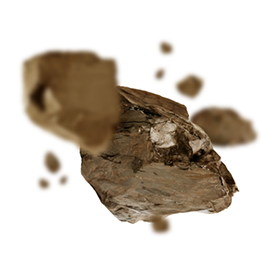
Propolis (bee glue) is a sticky, resinous greenish-brown substance that comes from resin collected by honeybees by combining the tree bud sap flows with their own discharge and beeswax to seal and disinfect their beehive against bacteria. The word propolis is derived from two Greek words pro and polis, which mean “defense” and “city” or “community” respectively, which means this natural product is used in hive defense. Due to its waxy nature and mechanical properties, bees use propolis in the construction and repair of their hives - for sealing holes and cracks and smoothing the internal walls, and retaining the internal temperature of the beehive as well as for preventing weathering (e.g., it is used for decreasing the size of the outlet opening during periods of cold weather) and invasion of predators.
Propolis has been used for medicinal and beauty purposes since before 350 BC. The Egyptian Pharaoh Cleopatra started using propolis ingredients during the embalming process. In ancient Greece, Hippocrates, the most admired figure in the history of medicine, would use propolis to heal infections and wounds.
Rich in more than 30 strong antioxidant flavonoids, essential oils, polysaccharide lactones, amino acids, minerals and vitamins.
ANTIOXIDANT
Free radicals damage the skin by grabbing an extra electron from atoms in the skin and antioxidants protect the skin by donating an electron to those free radicals.
Propolis has strong antioxidant activity due to the presence of high phenolic content and flavonoids. It protects the skin by neutralizing oxidative stress caused by free radicals on the skin thereby protecting lipids and other cellular components from being oxidized or destroyed (Free radical scavenging effect). It offers antioxidant protection from environmental aggressors that damage skin cells leading to premature aging, dullness and dark spots.
Antioxidants can also help combat the breakdown of collagen and elastin, the two proteins responsible for keeping skin looking firm, healthy, and youthful. Propolis can help block the degradation of collagen caused by exposure to UV light.
ANTIMICROBIAL
Propolis is effective against various microbes because it is rich in flavonoids.
Antibacterial
The antibacterial properties of propolis support the fact that it is active mainly against aerobic and anaerobic Gram-positive bacteria and lower activity against the Gram-negative ones in small quantities or is inactive at all. This is explained by the species-specific structure of the outer membrane of the Gram-negative bacteria and the production of hydrolytic enzymes which break down the active ingredients of propolis.
Therefore, propolis is highly effective against the following Gram-positive bacteria: P.acne, Streptococcal and Staphylococcal bacteria.
Antiviral
Propolis possesses antiviral properties in cold sores caused by HSV type 1. It is also effective against genital infections caused by HSV type 2.
Antifungal
Propolis has shown antifungal effects on strains of C. albicans, C. glabrata, C. krusei, and Trichosporon spp.
ANTI-INFLAMMATORY
The anti-inflammatory properties of bee propolis can help tone down the redness. The main mechanisms underlying the anti-inflammatory activity of propolis included the inhibition of COX and consequent inhibition of prostaglandin biosynthesis, free radical scavenging, inhibition of NO synthesis, reduction in the concentration of inflammatory cytokines and immunosuppressive.
ACNE TREATMENT
Since propolis has antiseptic characteristics, this ingredient can help actively fight off acne-causing bacteria (P. acne). Propolis treats acne by combating oily skin and control sebaceous gland production.
Because of its healing abilities, it’ll help speed up recovery from scarring and heal your skin.
WOUND HEALING
Propolis is helpful in wound healing due to its anti-inflammatory, antimicrobial and antioxidant properties that accelerate new healthy cell growth.
Moreover, it may aid in wound healing and supports collagen type I and type II production through increasing fibroblast proliferation, activation and growth capacity. The accumulation of collagen type I in a matrix of an injury stimulates the repair process because collagen type I is indispensable for the keratinocyte migration and reepithelization. Whereas the accumulation of collagen type II accelerates the healthy process.
In addition, propolis stimulates glycosaminoglycan accumulation what is needed for granulation, tissue growth and wound closure.
Propolis is safe to be used in cosmetics.
https://core.ac.uk/download/pdf/322682797.pdf
https://www.cosmeticsdesign-europe.com/Article/2015/07/22/Research-finds-bee-propolis-is-a-beneficial-additive-in-lipsticks
https://www.ncbi.nlm.nih.gov/pmc/articles/PMC7036894/
https://www.researchgate.net/publication/337122288_Propolis_and_its_Cosmetic_Applications_A_Technological_Prospection/link/5dc61561299bf1a47b24297c/download
https://pubmed.ncbi.nlm.nih.gov/24201459/
https://www.ncbi.nlm.nih.gov/pmc/articles/PMC5317107/
https://www.ncbi.nlm.nih.gov/pmc/articles/PMC3872021/
https://www.ncbi.nlm.nih.gov/pmc/articles/PMC4964312/
https://www.ncbi.nlm.nih.gov/pmc/articles/PMC5954854/
https://www.ncbi.nlm.nih.gov/pmc/articles/PMC3249695/